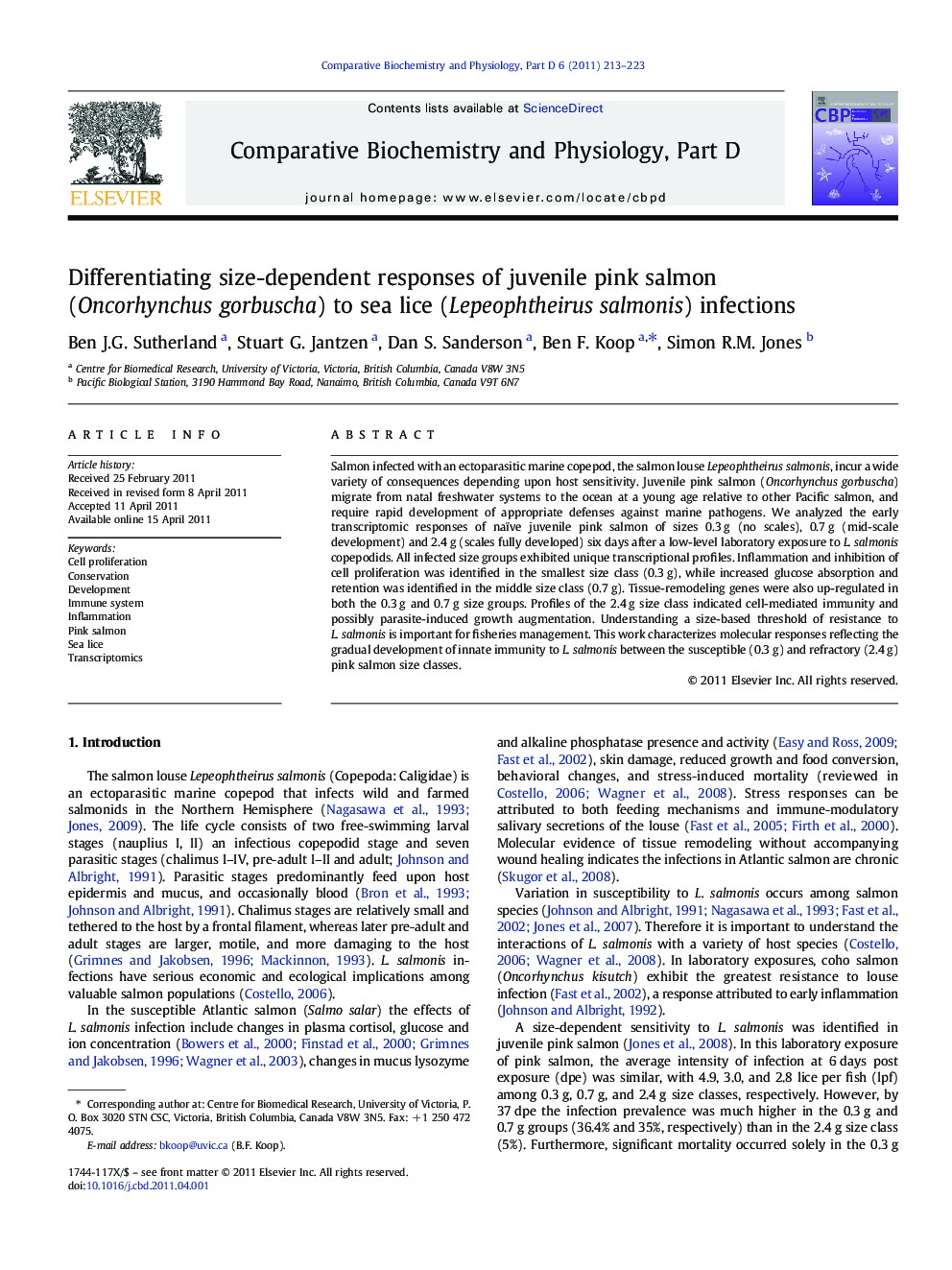| Article ID | Journal | Published Year | Pages | File Type |
|---|---|---|---|---|
| 1978744 | Comparative Biochemistry and Physiology Part D: Genomics and Proteomics | 2011 | 11 Pages |
Abstract
Salmon infected with an ectoparasitic marine copepod, the salmon louse Lepeophtheirus salmonis, incur a wide variety of consequences depending upon host sensitivity. Juvenile pink salmon (Oncorhynchus gorbuscha) migrate from natal freshwater systems to the ocean at a young age relative to other Pacific salmon, and require rapid development of appropriate defenses against marine pathogens. We analyzed the early transcriptomic responses of naïve juvenile pink salmon of sizes 0.3Â g (no scales), 0.7Â g (mid-scale development) and 2.4Â g (scales fully developed) six days after a low-level laboratory exposure to L. salmonis copepodids. All infected size groups exhibited unique transcriptional profiles. Inflammation and inhibition of cell proliferation was identified in the smallest size class (0.3Â g), while increased glucose absorption and retention was identified in the middle size class (0.7Â g). Tissue-remodeling genes were also up-regulated in both the 0.3Â g and 0.7Â g size groups. Profiles of the 2.4Â g size class indicated cell-mediated immunity and possibly parasite-induced growth augmentation. Understanding a size-based threshold of resistance to L. salmonis is important for fisheries management. This work characterizes molecular responses reflecting the gradual development of innate immunity to L. salmonis between the susceptible (0.3Â g) and refractory (2.4Â g) pink salmon size classes.
Keywords
Related Topics
Life Sciences
Biochemistry, Genetics and Molecular Biology
Biochemistry
Authors
Ben J.G. Sutherland, Stuart G. Jantzen, Dan S. Sanderson, Ben F. Koop, Simon R.M. Jones,
